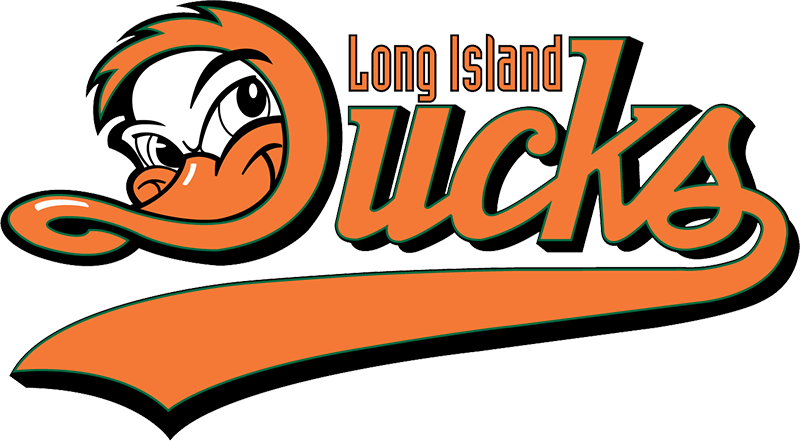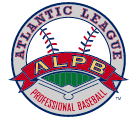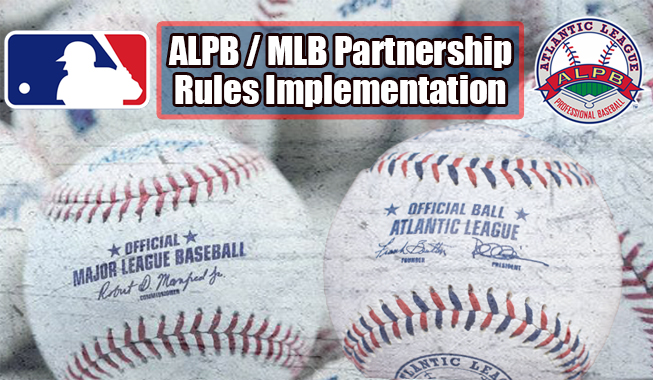MLB’s Partner League will test “double-hook” DH and pushed-back pitching rubber in 2021
(New York, N.Y., April 14, 2021) – Major League Baseball (MLB) and the Atlantic League of Professional Baseball (ALPB) today jointly announced new experimental playing rules that will be in place during the 2021 Atlantic League Championship Season. The changes under the continued partnership agreement between the two parties are as follows:
“DOUBLE-HOOK” DESIGNATED HITTER (FULL SEASON)
- Once a team’s starting pitcher is replaced, the team will lose its Designated Hitter for the remainder of the game. The Club will be required to use a pinch hitter, or the relief pitcher will bat.
- The “Double Hook” rule represents a potential compromise between the historical rules of the National League (which has not employed the Designated Hitter, except in 2020) and the American League (which has used the Designated Hitter since 1973).
- Nearly 90{59e066caee8341e4adfcff700a411bd30883f60e0149aa94720b4863e893a9b8} of pitching starts in the Major Leagues in 2020 lasted less than seven innings. By linking the DH to the starting pitcher, the rule aims to incentivize teams to leave their starting pitchers in longer, increase the value of starters who can work deeper into games and increase the strategic element in the late innings of a game.
PITCHING RUBBER MOVED BACK ONE FOOT (SECOND HALF OF SEASON ONLY)
- Moving the pitching rubber back 12 inches to 61’6” will provide batters with more time to react to pitches. The expectation is that more reaction time will help batters make contact more frequently, putting more balls into play, and creating more action in the game.
- The reaction time on a 93.3 mph fastball (average velocity in 2020) thrown from 61’6” is approximately equivalent to a 91.6 mph fastball (the average fastball velocity in 2010) thrown from 60’6”.
- As pitchers have gained velocity and used technology to improve the effectiveness of their pitches, the strikeout rate in Major League Baseball has increased for 15 consecutive years, from 16.4{59e066caee8341e4adfcff700a411bd30883f60e0149aa94720b4863e893a9b8} of plate appearances in 2005 to an all-time Major League record 23.4{59e066caee8341e4adfcff700a411bd30883f60e0149aa94720b4863e893a9b8} in 2020.
- An analysis performed by Major League Baseball determined that a 12-inch increase would be the minimum interval needed to evaluate a change in mound distance. This change is expected to be meaningful without being disruptive.
- This change was also determined to be safe, as it does not require the pitcher to alter pitching mechanics and there is no evidence of increased injury risk. The American Sports Medicine Institute (“ASMI”) conducted a study in October of 2019 that measured the impact of pitching distance on biomechanics. In the study, high-level collegiate baseball players threw from distances of 60’6”, 62’6”, and 63’8”. No significant differences in key measures of rotational motion (kinetics) or acceleration (kinematics) were observed among the varying pitching distances. In addition, ball velocity and strike percentage remained consistent.
- MLB and the Atlantic League are partnering to upgrade the TrackMan tracking technology that will be used during the 2021 season to project and measure pitches.
- There is precedent for this change. In 1893, the National League moved the pitching rubber back 5 feet, to its current distance of 60’6”. The result was that the strikeout rate declined from 8.5{59e066caee8341e4adfcff700a411bd30883f60e0149aa94720b4863e893a9b8} in 1892 to 5.2{59e066caee8341e4adfcff700a411bd30883f60e0149aa94720b4863e893a9b8} in 1893, and batting average increased by 35 points (rising from .245 in 1892 to .280 in 1893).
- In 1969, in addition to reducing the size of the strike zone and prohibiting the use of foreign substances, Major League Baseball lowered the height of the mound from 15” to 10”. The result was that the strikeout rate fell 4{59e066caee8341e4adfcff700a411bd30883f60e0149aa94720b4863e893a9b8} (decreasing from 15.8{59e066caee8341e4adfcff700a411bd30883f60e0149aa94720b4863e893a9b8} in 1968 to 15.2{59e066caee8341e4adfcff700a411bd30883f60e0149aa94720b4863e893a9b8} in 1969) and batting average rose by 11 points (increasing from .237 in 1968 to .248 in 1969).
In addition, the Atlantic League will continue its use of the Automated Ball-Strike System (“ABS”) to assist the home plate umpire in calling balls and strikes. In 2021, ABS in the Atlantic League will feature upgraded ball-tracking technology and modifications to the geometry of the strike zone in order to better match the strike zone that players are familiar with and encourage more action in the game.
Morgan Sword, MLB’s Executive Vice President of Baseball Operations, said: “After a successful set of tests in the 2019 season, we are excited to introduce the next generation of experimental rules. The Atlantic League is an important step in the pipeline for potential rule changes at the Major League level, and we look forward to seeing them brought to life in a competitive environment.”
Theo Epstein, Consultant to MLB, said: “Fans, players and many others in the baseball community have expressed an interest in seeing more regular action on the field. Therefore, it’s important that we use the 2021 season to explore various ways to create more frequent contact —and the increased action and athleticism on display that will follow. We are grateful that the Atlantic League — which has been at the forefront of successful rule experiments in the past — has agreed to test a 12-inch increase in the distance between the pitching rubber and home plate during the second half of the season. We expect to learn a great deal about the impacts of such a change and whether an adjustment to this critical field dimension is worth potential future consideration at other levels of professional baseball.”
Rick White, President of the Atlantic League of Professional Baseball, said: “We are pleased to play a critical role in Major League Baseball’s tests and evaluation of experimental rules. The ALPB is a forward-thinking league, and it is satisfying to our teams and players to be leaders determining the future of our sport. We are proud to play our part conducting MLB trials and excited to see the results of the potential changes.”
MLB will analyze the effects of these changes before deciding on potential additional modifications during the midpoint of ALPB’s 2021 Championship Season and in future seasons. The experimental playing rule changes are part of a three-year agreement between MLB and ALPB announced prior to the 2019 Championship Season.
A number of experimental rules that were first implemented in the Atlantic League in 2019 have been adopted in the Minor Leagues or the Major Leagues. Examples include the Three-Batter Minimum, which requires the pitcher to face a minimum of three batters or complete an inning before being removed from the game and became a Major League rule in 2020. In addition, ABS, which uses pitch tracking technology to call balls and strikes will be used in a Low-A league in 2021, the Step-Off Rule will be used in High-A, restrictions on defensive positioning will be used in Double-A, and 18” bases will be used in Triple-A. All of these rules were first tested in Atlantic League play during the 2019 season.
###




